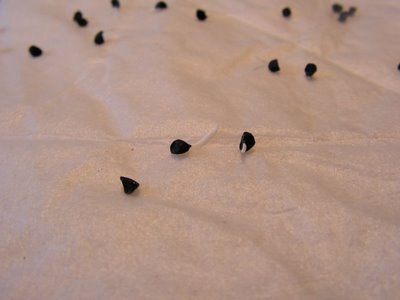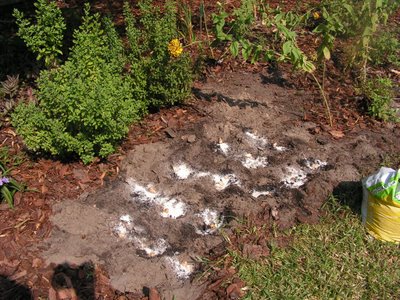
'Cucino' cukes, in bloom, planted October 14, so approximately six weeks from seed to bloom. These 'Cucino' seeds were EXPENSIVE, and only 3/4 of them sprouted. Then the frosts we had a few weeks ago took two of them down (they are apparently somewhat more susceptible than the other cucumbers I've planted, 'Salad Bush' and 'Lemon'). The fruit is forming; according to the description, it should be no larger than a cornichon.
***
My hybrid lasagna-square foot garden: using the Dryland No-Till method of preparing the bed, and the square-foot approach of intensive use of space.
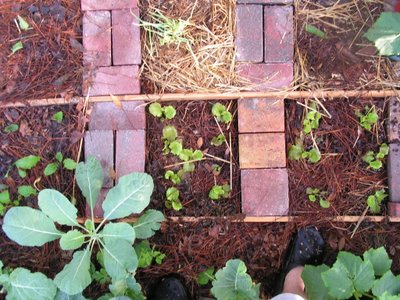
A very low-impact and low-cost way to start a garden that works well here in FLA during the cool, dry season. Every week, after I drop my daughter off at school, I spin through the neighborhood looking for bags of yard waste. A couple very thoughtful households even shred the leaves and grass clippings. I pour a bucket of water into the bag of yard waste, twist it closed, and leave it to sit for a week or two. Where I'm building the new section of the garden, I lay down a ten-sheet-deep layer of newspaper right on top of the grass (weeds and rye that I planted in October). I toss the decomposing mulch thickly over the new section of my bed. On top of that all, I lay down a cover of pine-straw for aesthetic reasons. To plant either seeds or seedlings, I pull the mulch back, tear a little gash in the newspaper, pile a half-gallon of bagged composted manure into a three-inch high hill, and in goes the seed or seedling. Then the mulch goes back around the mound, I water thoroughly, and off it grows. The roots seem to grow more out than down, finding their way through the rich compost. Again
— the downside to this approach is that at least initially, the garden needs more water since the mulch drains so quickly and lies on top of the soil. Eventually I guess the mulch will become humus, and the newspapers will dissolve and maybe the water solution will be resolved.
Trying to keep things eco-friendly and cheap, I've used scavenged boards and leftover pavers to build the borders and spacers in the garden.
***
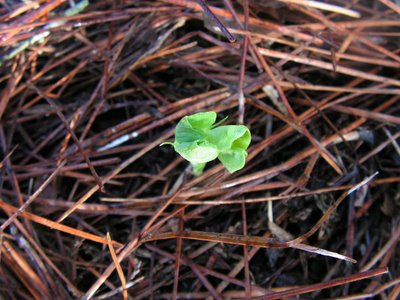
A pea ('Knight', a bushing type), pushing through the pine-straw mulch. The 'Cascadia' I planted at the same time hasn't shown itself.
***
'Florence Fennel', a bulbing fennel that I planted
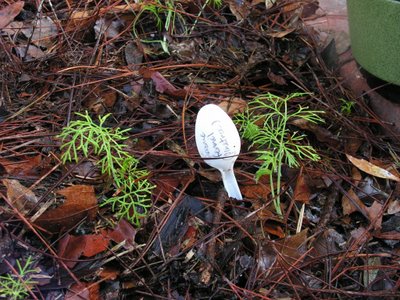
on October 23, and transplanted into the garden mid-November. I keep stepping on the tender things, but they are very forgiving.











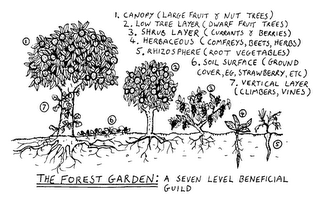





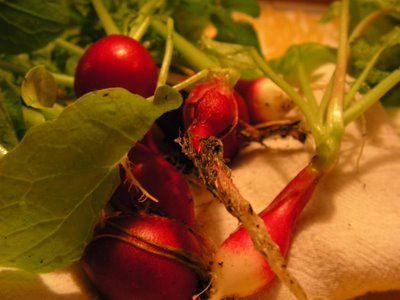
 Description
Description



